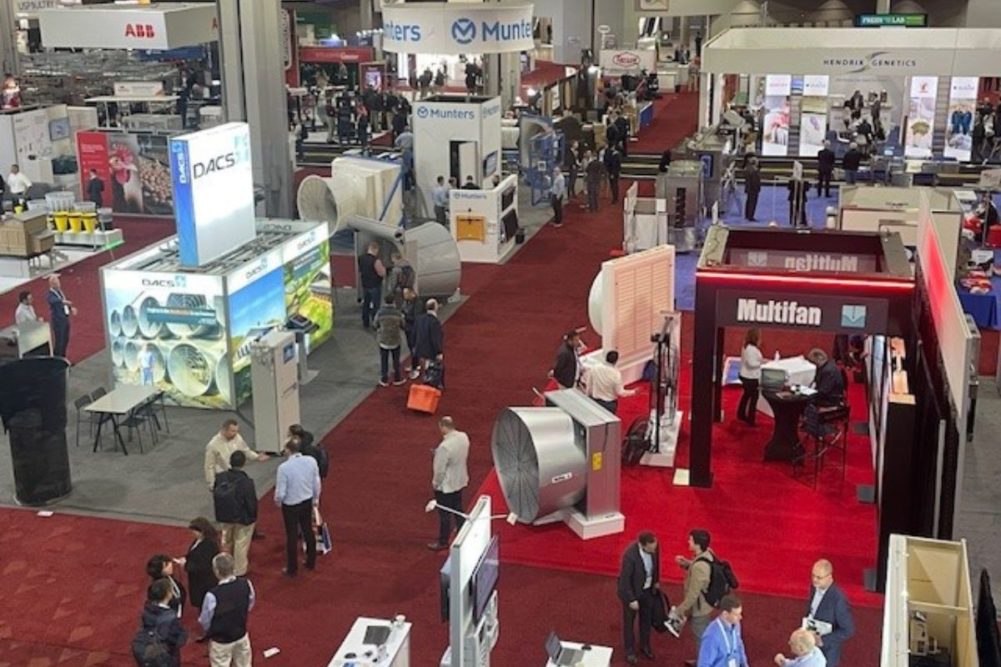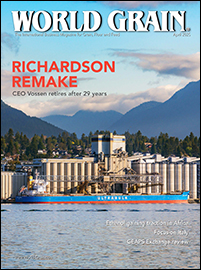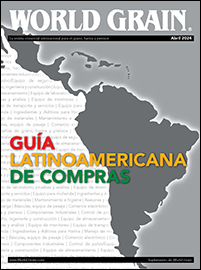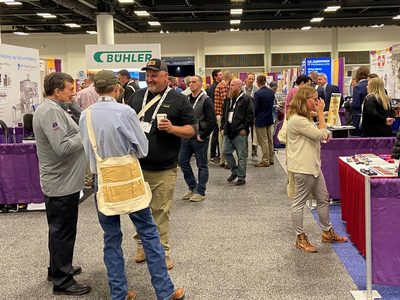
Arvin Donley, World Grain editor.
| Credit: ©SOSLAND PUBLISHING CO.KANSAS CITY, MISSOURI, US – During the peak years of the COVID pandemic, which included most of 2020, all of 2021 and part of 2022, the grain, flour milling and feed milling trade show circuits took a beating. Some associations canceled their events while others offered virtual events exclusively online or some combination of live and virtual programs.
Associations such as the Grain Elevator and Processing Society (GEAPS), the International Association of Operative Millers (IAOM) and VICTAM, which rely heavily on event income, had to dip into reserve funds to stay afloat during this time of uncertainty.
Several questions kept industry association executives up at night. Would attendees and exhibitors return to the trade show circuit once the pandemic eased? Would grain, flour and feed companies be satisfied with the way their businesses operated without the in-person events and scale back their investment by sending fewer employees?
Much to their relief, agriculture industry conferences and trade shows have rebounded nicely in the past year or so, with most reporting attendance figures rivaling turnouts prior to COVID. Notably, the International Production and Processing Expo (IPPE) in late January in Atlanta, Georgia, US, set a record for number of exhibitors (nearly 1,500), square feet of exhibit space (621,000). And although it hasn’t released the official number, organizers said this year’s event was expected to challenge the attendance record of 33,000 set in 2019.
It felt like old times. The expo floor was buzzing with activity and educational sessions were overflowing with delegates. Perhaps more important than the record-breaking numbers, there was an optimistic tone surrounding the event, which is co-sponsored by the American Feed Industry Association (AFIA), US Poultry and Egg Association and the Meat Institute.
Constance Cullman, president and chief executive officer of the AFIA, used the word “flooded” to describe the hallways, expo floor and educational sessions.
“Everything I have heard is positive,” she said. “People are really finding a lot of value. I’ve been talking to folks who are saying they are signing PO (purchase order) after PO, so I love to hear that business is happening. It’s good for the industry.”
Despite all the technological innovations that allow us to connect remotely, whether it’s videoconferencing on Zoom or Microsoft Teams or engaging on social media platforms such as LinkedIn or X, it can’t replicate a face-to-face meeting between suppliers and customers at a conference. Most participants I’ve spoken with say they prefer in-person events where they can share a firm handshake while engaging in meaningful discussions.
COVID provided an opportunity for companies to weigh the pros and cons of participating in live conferences and trade shows and to determine if they could successfully conduct business without them. The verdict appears to be that these events are worth the investment and that virtual engagement, while a useful tool, cannot replace face-to-face human interaction.
There’s an intangible value of attending these events that goes beyond a simple return-on-investment analysis. Greek philosopher Aristotle many centuries ago said: “Man is by nature a social animal.” The impressive rebound in attendance and activity at industry conferences and trade shows, post-COVID, buttresses the ancient philosopher’s astute observation.
Arvin Donley is editor of World Grain.






